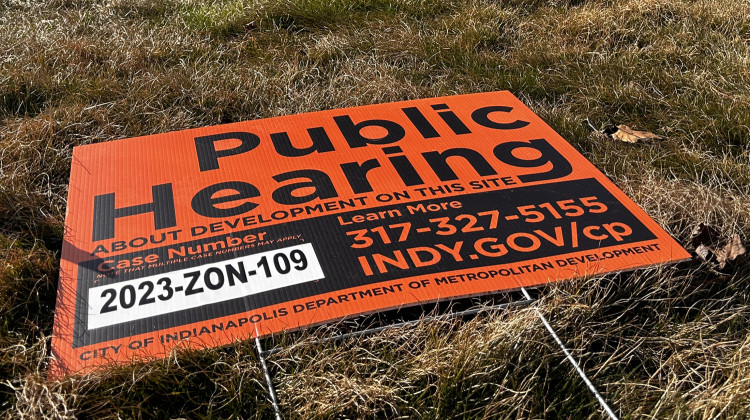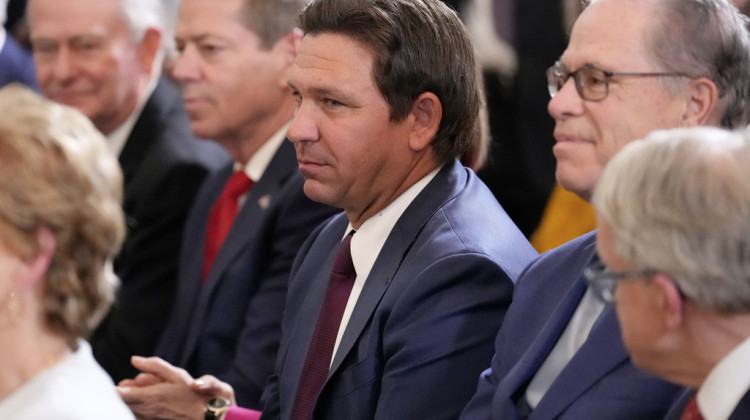A bill passed during the 2018 legislative session requires public high schools in Indiana to offer a computer science elective, starting in 2021. But smaller school districts could find compliance more challenging.
Kevin Smith has been on the job as Covington Community School Corporation Superintendent for 45 days.
His desk is covered in neat stacks of paper, notebooks, and binders—and a school walkie-talkie.
“I don’t like it this way," Smith says. "But it is what it is for today. Have a seat!”
Covington sits near the border of Indiana and Illinois in Fountain County. It’s the county seat, with a population of about 2,500. Smith was previously a principal in towns such as downstate Switz City, so he’s used to education in less-populated places.
But for small towns with limited resources, it can be a big challenge to implement the state’s new computer science requirements.
“The long and short of it is look, to say that it's not a challenge to be able to meet the needs of everyone it is," Smith says. "To me, that's going to be true whether it's a larger school or smaller school.”
At the high school level, Covington currently offers classes in web design and in what it calls “digital responsibility” – essentially a computer catch-all. To comply with the new legislation, the corporation’s schools have to offer at least one of the courses on a list provided by the state, which range from Intro to Computer Science to AP Computer Science Principles. The state won’t mandate how many students *take* those classes, just that they’re available. But finding instructors may be the first challenge.
“I’m the only technology teacher at our high school,” says Craig Sowers, whose desk faces a classroom lined with 24 computers at the high school.

Covington's high school computer lab. (Emilie Syberg/WBAA![]() )
)
“Each kid has a 1 on 1 device--they all have Chromebooks--so there's no shortness of technology, there's just a shortness of space," Sowers says. "And there's a shortness of me, is what becomes the problem.”
So what’s a small school corporation like Covington to do if it needs more teachers trained in CS? Hiring additional full-time staff is not in the budget for many districts. The Senate bill does offer some professional development funding for teachers to learn computer science. But that could mean making an art or a home ec teacher a part-time CS instructor, and thus having them teach fewer classes in their specialty.
Karen Jung is the president of Nextech, an Indianapolis non-profit instructing teachers across the state on how to implement computer science in K-12 classrooms. She says teachers who don’t have a technology background can feel intimidated.
“I think what a historical challenge is--and it's not specific to just Indiana--but is helping folks understand what computer science is and is not, and why every student should have access to it,” Jung says.
Jung says many people see computer science simply as coding, programming, or software development—but there’s a bigger picture.
“Computer science is all about the fundamentals of problem solving, creativity, creating algorithms, how to solve problems that really transcend any specific programming language or any specific type of technology in really any subject," Jung says. "And prepare a student for success post-secondary, no matter what career path they go down.”
In 2017, 115 of Indiana’s 525 high schools – that’s just more than one-fifth -- offered computer science courses. That number will need to more than quadruple by the 2021 deadline. In a conference call, Indiana Department of Education spokesman Adam Baker says the DOE understands the challenges school districts will face, especially ones like Covington where funds might be limited.
“That's one of the things that we don't take lightly, but one of the things we enjoy is working with districts to kind of figure out those solutions,” Baker says.
Back in the Covington superintendent’s office, Kevin Smith is realistic. 45 days into his job, he doesn’t know the answer – but he’s confident there’ll be a plan by the deadline.
“We may not see what it's going to be sitting here today, but we'll get the right answer at the right time,” Smith says.
Covington has the next two school years to find a solution.
 DONATE
DONATE








 Support WFYI. We can't do it without you.
Support WFYI. We can't do it without you.